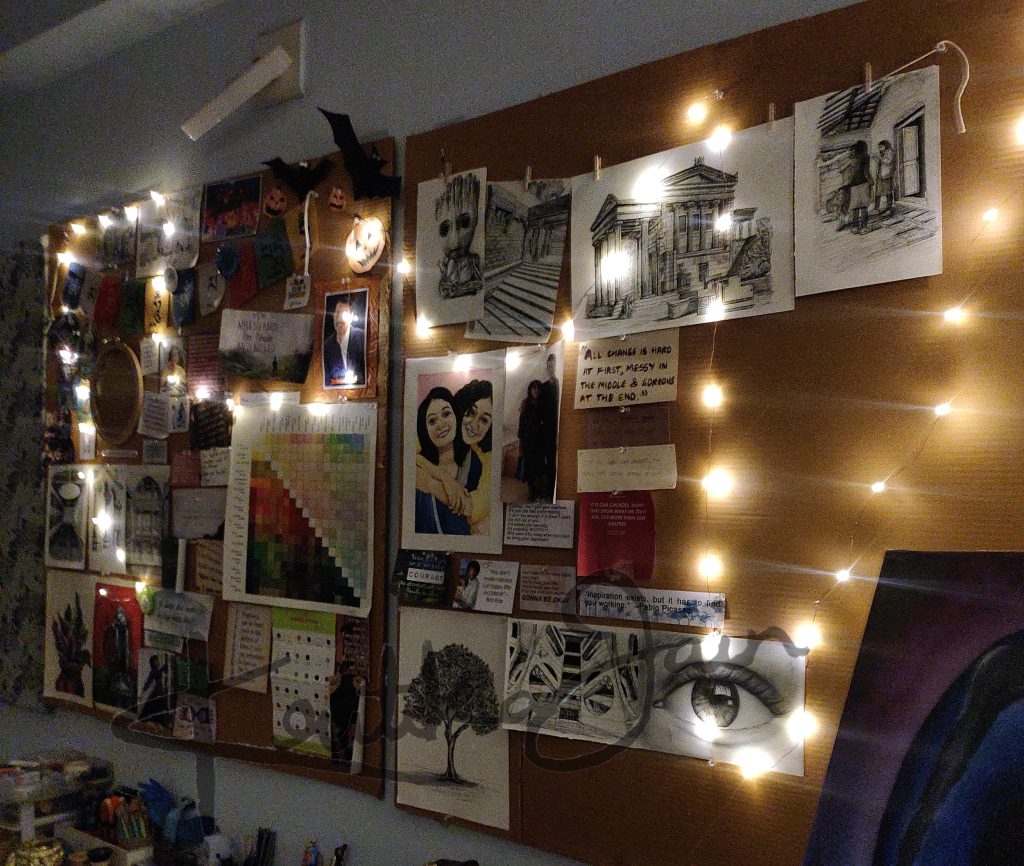
“Creativity” has many different perspectives, and everyone sees it differently. Some might consider creativity to be reserved only for designers and artists. But some people, like me, see creativity in everyone. Many people just don’t feel creative due to these set norms by society, but that doesn’t mean that you aren’t creative.
You can check out my blog post, – My Experience with Art Therapy, where I have described what art therapy is and its different approaches. If you already know what art therapy is and its benefits and just want to go through the list of my favourite therapeutic art activities, feel free to skip the next few paragraphs!
Some might express themselves through painting, and some with writing; some with music, and some with dancing; and then there are some who don’t enjoy doing any of these activities; they usually express themselves verbally through talking and body language. Irrespective of a person’s skills, doing art is bound to be a therapeutic experience.
Whatever the creative outlet looks like, expressing yourself creatively plays a vital role in mental, physical, emotional, and spiritual health. These activities help you to release stress, reduce anxiety, overcome overwhelming feelings, and increase your overall well-being.
The therapeutic art activities mentioned below in this blog are methods to brain-dump the overflow of thoughts and distressing emotions and can be done by anyone at any time of the day. The great thing about such activities is that you don’t need a psychologist or other medical professionals to guide you. You can do it all by yourself with little effort.
Note: I am not a professional or licensed therapist. I’m an artist, and this blog is based on my experience and things I have learned through courses and trial and error. This blog is not meant to diagnose anyone with any mental health issues; for that, it is recommended to seek professional support. This blog post only suggests activities that you can do by yourself.
I have been practicing quite a number of therapeutic creative activities ever since my childhood, and I didn’t even realize it. In this blog, I’m going to share with you my 9 favourite therapeutic art activities. So, stay tuned!
“Art tells the truth.”
Art Therapist Edith Kramer
How Art Therapy Works? – A Brief
Krista Reinhardt-Ruprecht, a licensed psychotherapist, explains, “When we’re stuck in feeling states, we are in the right hemisphere, and it’s hard to climb out of that. When we use our hands to make art or express ourselves creatively, we trigger our left hemisphere to come back online. Basically, we are making an internal emotion into an external piece of art, which can help us by looking at it as separate from who we are.”
Many studies prove that making art lowers cortisol levels. Cortisol, in simple words, is the stress-related hormone and is responsible for all the high and low stress levels in your body. Having the right balance of cortisol is very important for a healthy life. Highly increased or highly decreased cortisol levels can cause a lot of physical and mental health issues.
That is where therapeutic art activities come into place. It is like a hobby that you do from time to time to relieve stress. Just like someone likes to play cricket as a hobby to distress emotions, creative arts are another hobby-like activity.
“Its aim is to calm, motivate, and make an individual happy. The result of art therapy, quintessentially, is to bring satisfaction and happiness to people who are overburdened with stress and worry.”
My Top 9 Therapeutic Creative Arts Activities
1.Colouring
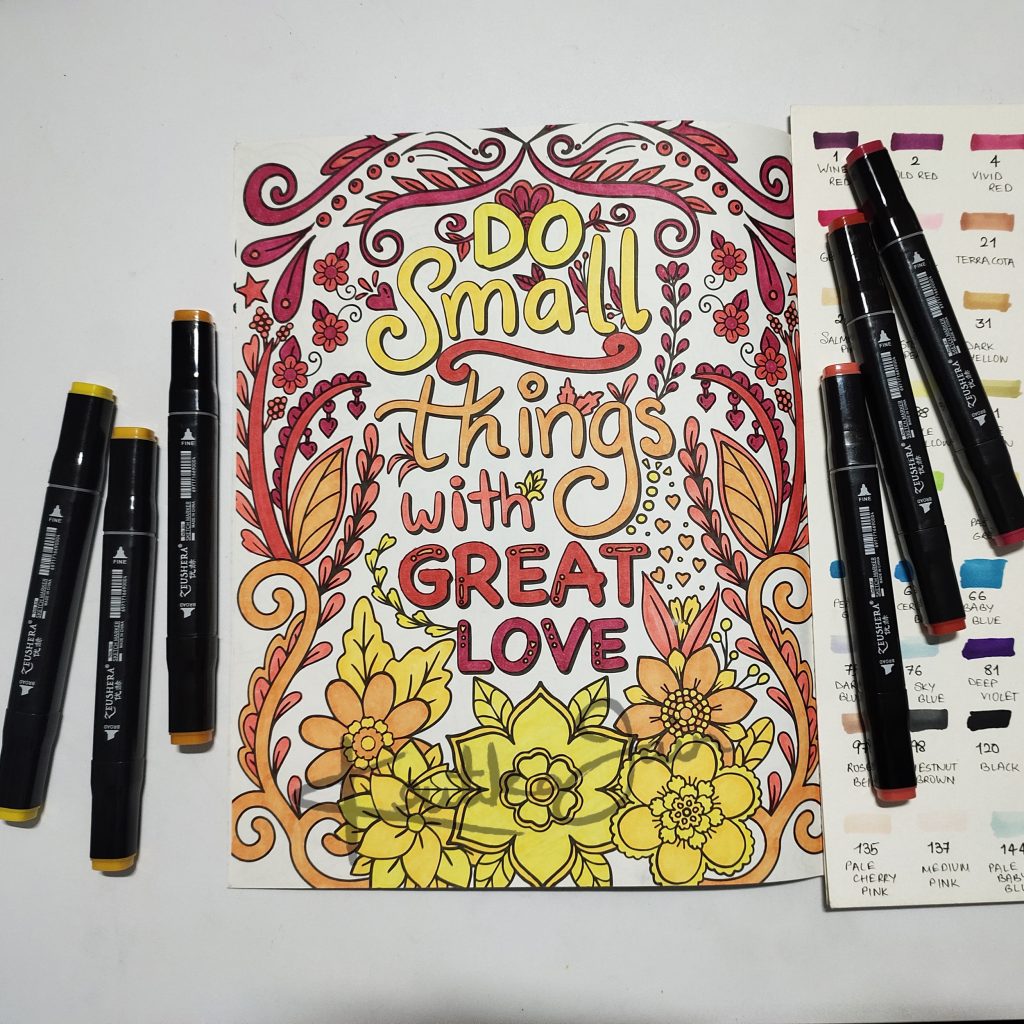
Recently, I have developed a new hobby – colouring. Yes, colouring in those colouring books, which we used to do in our childhood. The only difference is that now I’m doing it as an adult. In fact, many adults enjoy colouring and in recent years, adult colouring therapy has become widely recognized. So, grab some crayons, colour pens, colour pencils, or markers and start colouring in those pre-made colouring books.
If you doubt that you might not like this activity, try taking a print from the many free printable colouring designs that you can find online. It is advised to print on a thick paper of about 120–150 gsm for better results. Check out my blog post – Colouring – A New Hobby for Adults, to learn more about the topic.
2.Dance
Dancing my way to peace and freely moving my arms, legs, and body is another simple activity that can be very therapeutic. Studies show that just moving your body freely increases the levels of the happy hormones – serotonin, endorphins, and oxytocin in your body. I usually close the doors of my room when I feel angry, overwhelmed, or even when I’m in a state of loving myself, put on my favourite music, and dance like no one is watching (and there’s actually no one watching or judging me right then!).
3.Journaling
Instantly writing down my thoughts and venting out in a judgment-free zone whenever I feel down, is my go-to therapeutic creative arts practice. It doesn’t have to be just verbal. You can add drawings, doodles, etc. along the way. But writing is the essential part for me. It helps me sort out my thoughts, reduces overthinking, and helps me reflect on these journal entries in the future.
Go grab a pen and book, or use a digital platform like your mobile phone or laptop, and start journaling right away!
4.Sketching my thoughts/ideas
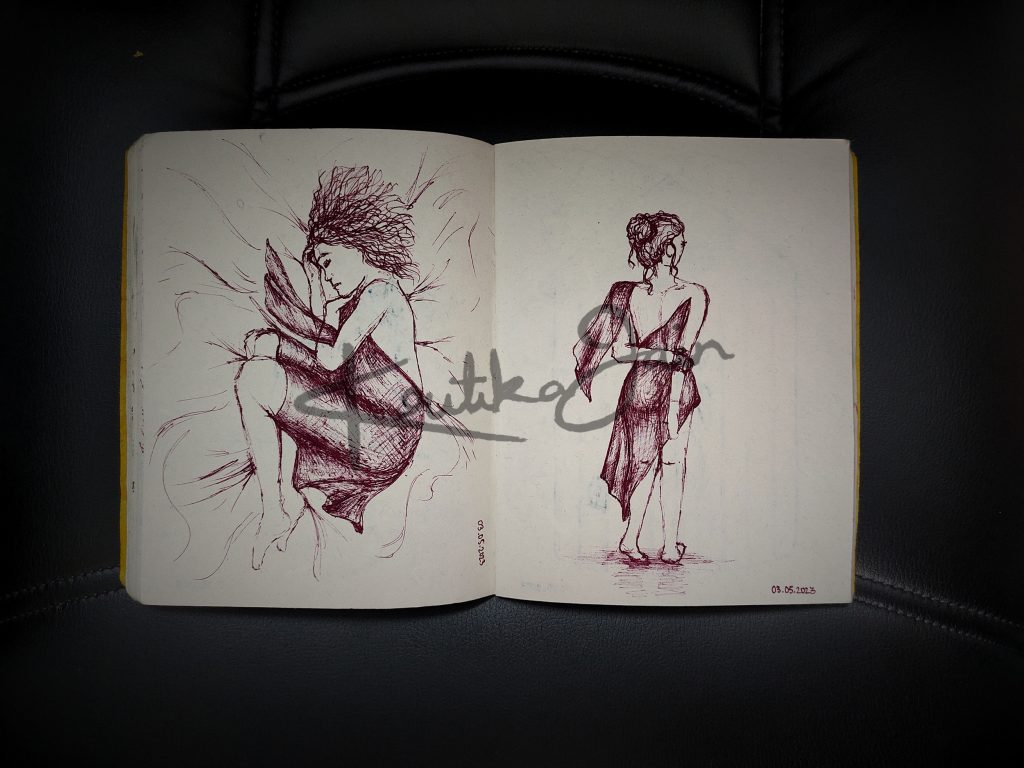
I was feeling very hurt by a certain situation one day, and it kept bothering me until I picked up my sketch book and started drawing out my thoughts and feelings. I felt so light after finishing the drawing. Obviously, you don’t have to be so perfect and draw realistically, but this is my style, and I usually end up drawing my feelings in a similar manner.
Try out sketching yourself, and you might start noticing certain patterns and styles in your sketches. It can also help you reflect on it later. If you are seeking psychotherapy, then you can also discuss these sketches with your therapist!
5.Scribbling
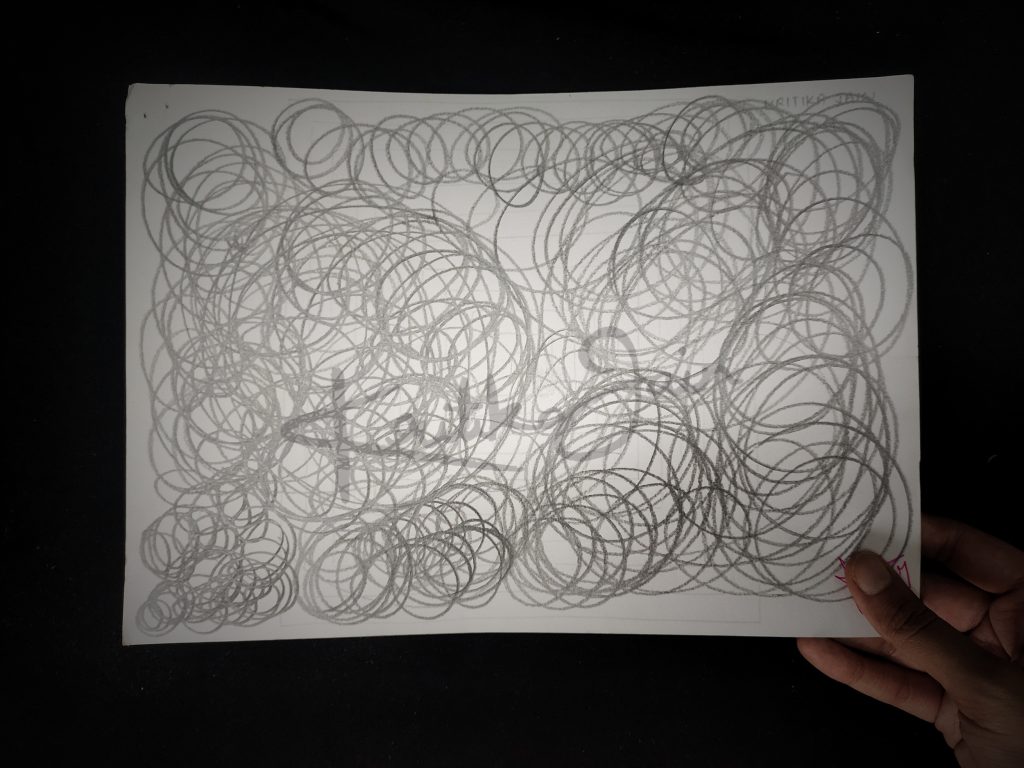
One of the best methods to release anger in a non-hurtful and non-reactive manner is SCRIBBLING. From scribbling doodles to scribbles randomly, like I did in the photography, can be very helpful in channeling your anger in a subtle manner.
I usually use a mix of coloured pens, choose colours to match my emotions, and start scribbling randomly with a lot of pressure. I keep scribbling until the page is filled with lines. If that wasn’t enough, turn to the next page! You can draw something out of the scribbling or just fill the whole page randomly. If colour pens are not within your reach at the moment, pick up a pencil or normal pen; it works just as well!
6.Music
Listening to my playlist of motivational and self-love songs is very relaxing. I bet you feel the same, too, especially when you can relate to those songs! Playing instruments like the piano, guitar, ukulele, etc. can also be quite destressing. You don’t have to be perfect in what you play; even playing random notes and keys can distract your mind in a good way and uplift your mood.
So, if you own any instrument, try playing some notes the next time you feel down.
7.Paint anything
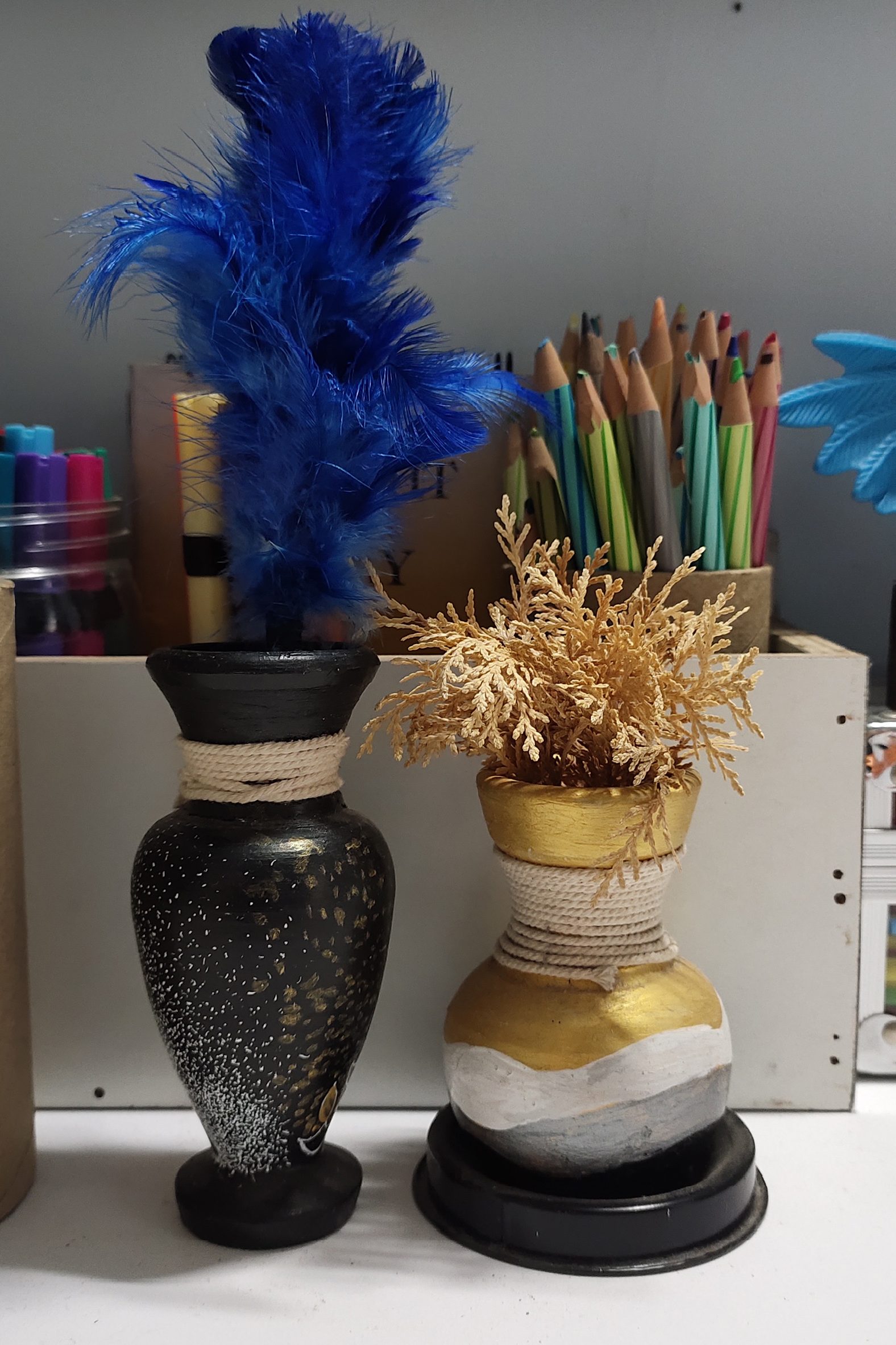
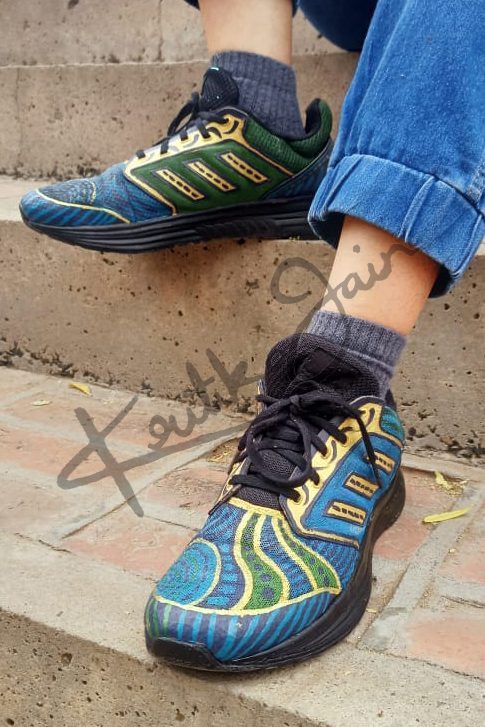
Pick up any object lying around your home and start painting over it! It can be anything from flower pots, boxes, and containers to a sketchbook cover page, furniture, or even walls. Just paint anything, any design, whatever comes to mind at that moment. If you are a beginner with no to little experience in painting, then it might be a bit overwhelming to paint big stuff, especially in that low state. So, my advice is to start small, like these flower pots, which you can complete in one go.
8.Automatic drawing
I learned about this technique of therapeutic art on social media and was thrilled with the outcomes. It is very simple to do. Just grab a pen or pencil, some paper, or a sketchbook, and start drawing everything that comes to mind. Forget about being perfect or “good” at what you are drawing. Draw your emotions, thoughts, creatures, and whatever else is coming into your mind, causing you to overthink. This activity is highly recommended for situations when you feel overwhelmed or keep overthinking.
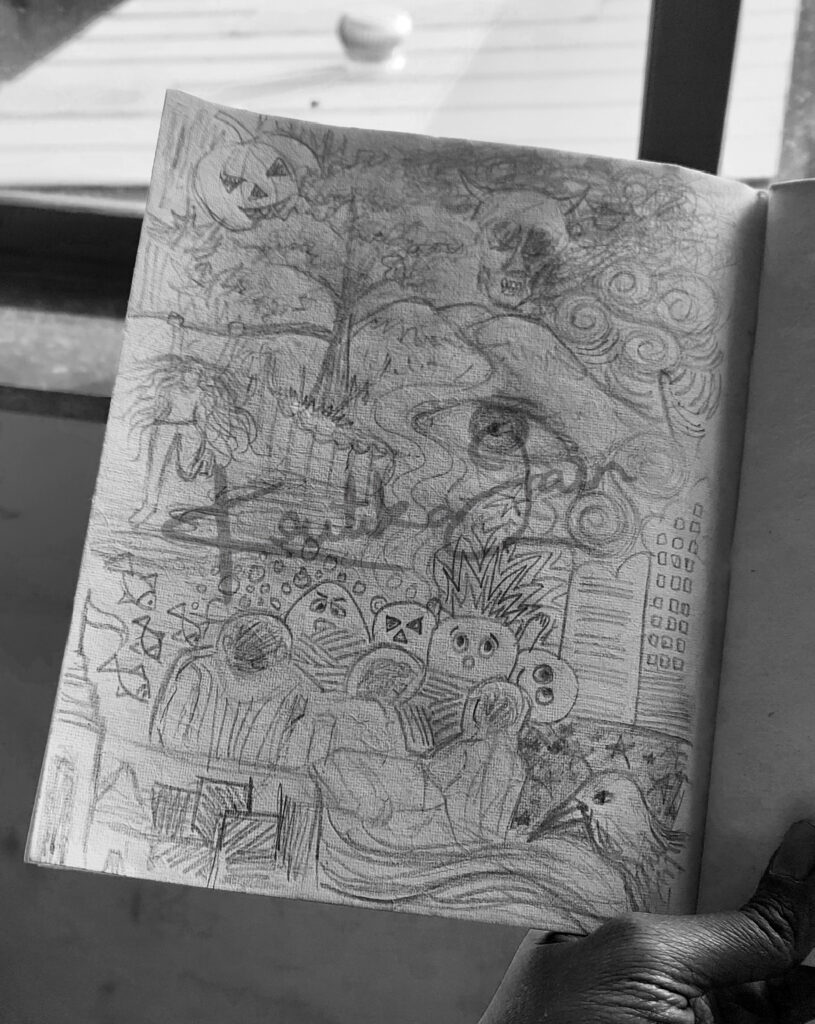
9.Create a mood board/vision board/collage

While I was stressing about my last semester at my college, I was craving to do something creative. And not like making a painting or dancing. But a board where I can see myself, my favourite thoughts and quotes, and display my best artwork. Yes, that’s a vision board. I created this vision board with adhesive hooks, corrugated cardboard, tag pins, and photos and prints!
Every time I look at my vision board, I feel motivated and encouraged to do my work and get closer to my goals. The quotes trigger positive and optimistic emotions in me. The photos of myself and my family remind me to be grateful for what I have. And my artwork keeps encouraging me to create more.
You can also pin up your small and long-term goals to help you stay on track with your vision. I keep updating my board from time to time, adding and removing photos, quotes, and artwork.
Making mood boards and collages is also very therapeutic. More on the topic in the next blog!
Here comes the end of the list of my personal favourite therapeutic art practices. Let me know in the comments section if any of these activities are therapeutic for you! Share your own therapeutic creative art practices, and I would love to try them, too!
Note: This blog post contains affiliate links for purchasing the products. It means that if you buy a product using that link, I will receive a small commission. This does not affect the price that you pay. I only recommend resources, products, and services that I adore and find useful. It helps me have a small side income, and your support is very much appreciated! Thank you!
Products I have used –
Motivation- Colouring Book for Adults
Ohuhu Alcohol Markers (Professional version)

Another article thoroughly and simply explained yet impactful! I myself do some the things u mentioned! I love jamming to my playlists and singing along. I also try to be consistent with journalling and recently I am painting the cover of my diary too! I have never been good at painting and I had doubts if I could paint well, but surprisingly I am not as bad 😂 I have a vision board inside my planner and honestly it’s so fun to make it. Thinking of what all you want to put up and how u arrange it, it’s all really exciting. I also came to know some new ways of therapeutic creative activities so thank you for explaining them so well ❤️ looking forward to the next blog ❤️